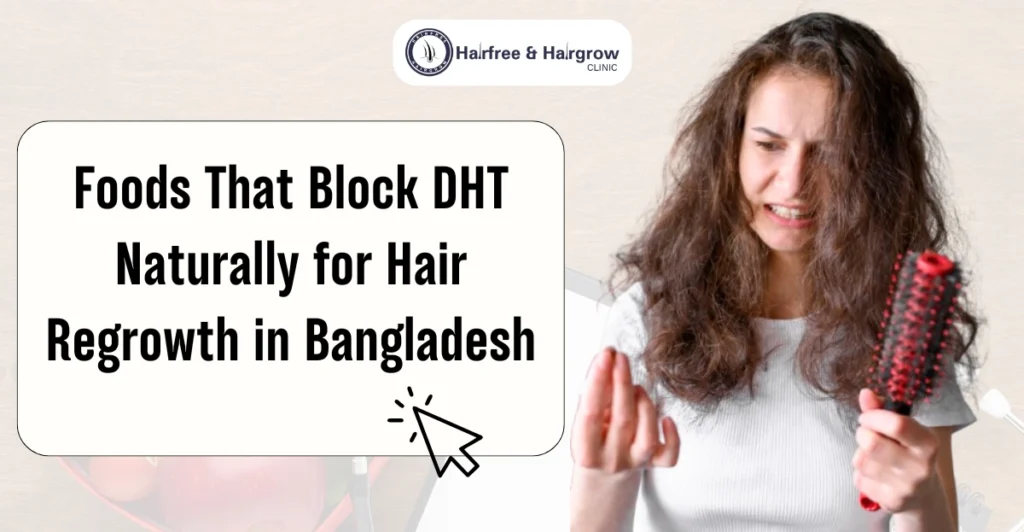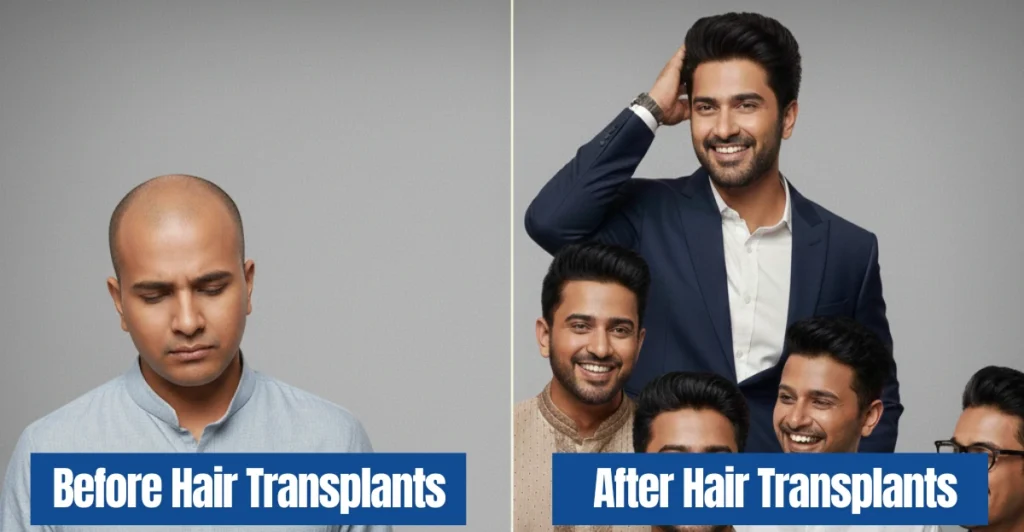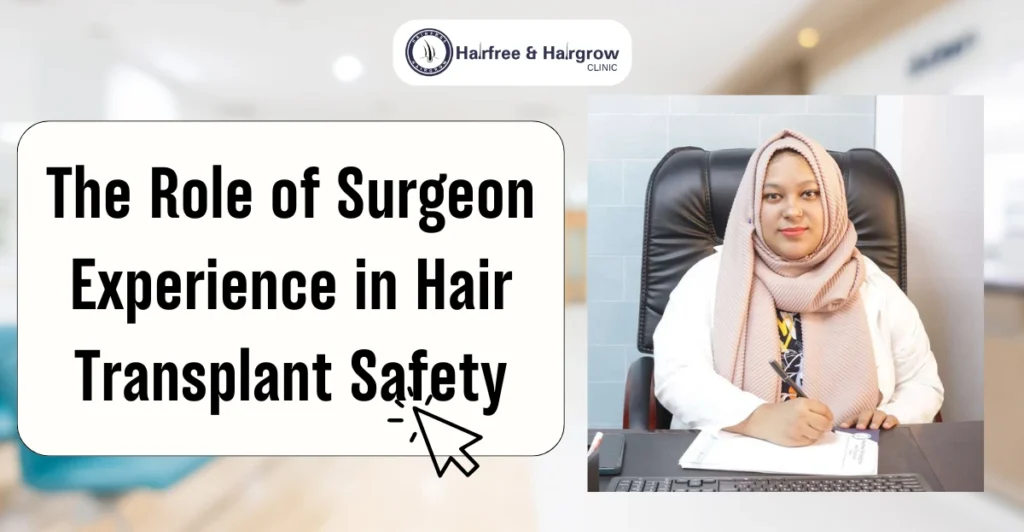Hair loss is more than a cosmetic issue; it affects self-esteem, social confidence, and even career prospects. In Dhaka, where urban stress, pollution, and genetic predispositions are common, thousands of men and women face this daily struggle. Thankfully, medical science offers a range of treatments, including medications, laser therapy, and permanent hair transplants.
In this guide, we’ll explore the difference between a hair transplant and non-surgical hair loss treatments available in Dhaka.
Table of Contents
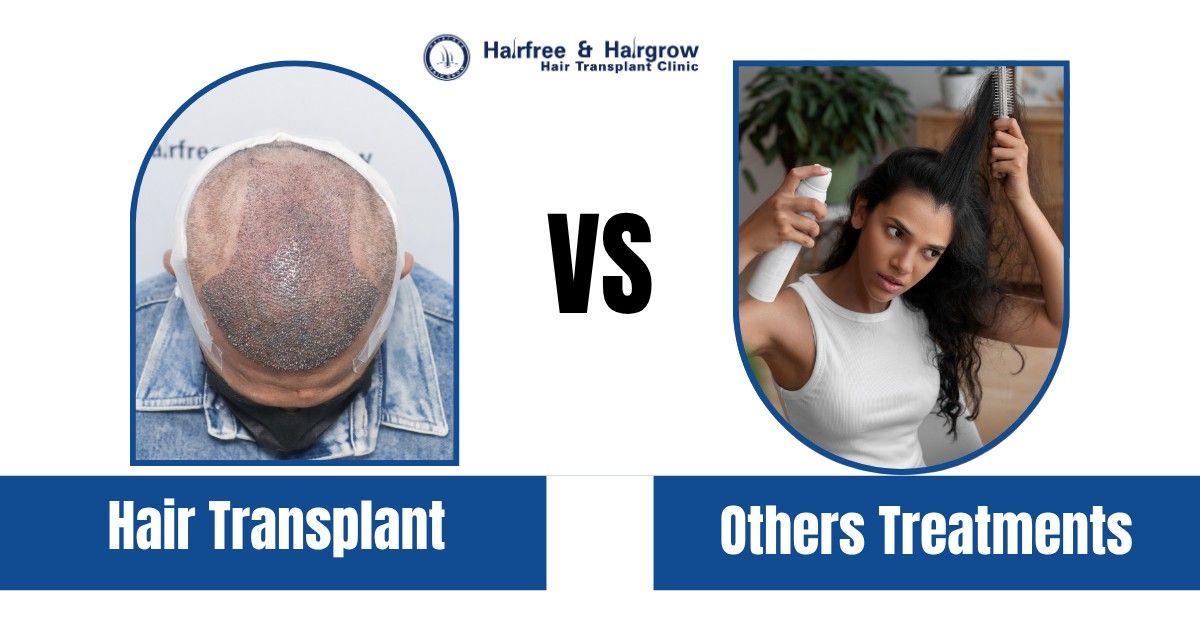
Understanding Hair Loss in Dhaka
Hair loss, also known as alopecia, affects people of all ages. While some experience gradual thinning, others notice sudden hair fall or bald patches. In Dhaka, the most common contributing factors include environmental pollution, poor diet, hormonal changes, stress, and heredity.
Common Types of Hair Loss
- Androgenetic Alopecia (Male or Female Pattern Baldness)
- Telogen Effluvium (stress-induced shedding)
- Alopecia Areata (autoimmune-related hair loss)
- Traction Alopecia (caused by tight hairstyles)
- Scarring Alopecia (due to injury, burns, or medical conditions)
Hair Transplant: A Permanent Solution
A hair transplant is a minimally invasive surgical procedure in which hair follicles are harvested from donor areas (usually the back of the scalp) and implanted into thinning or bald areas. It is the most effective treatment for long-term results.
Types of Hair Transplant Procedures
- FUE (Follicular Unit Extraction): Individual hair follicles are extracted and implanted one by one. It leaves no linear scar and has a quicker recovery.
- FUT (Follicular Unit Transplantation): A strip of scalp is removed to extract multiple follicles, which are then transplanted.
Benefits of Hair Transplants
Hair transplants provide permanent, natural-looking results. Once the transplanted follicles take root, they grow just like normal hair. Maintenance is minimal, and it is a one-time investment for many.
Non-Surgical Hair Loss Treatments in Dhaka
Several non-surgical options are also available, especially for people in the early stages of hair loss. These treatments can slow down hair fall, strengthen existing follicles, and, in some cases, promote regrowth.
1. PRP Therapy (Platelet-Rich Plasma)
PRP therapy involves drawing a small amount of your blood, processing it to extract platelet-rich plasma, and injecting it into the scalp to rejuvenate hair follicles. It is a popular treatment in Dhaka due to its natural approach.
While it’s non-invasive and has minimal side effects, PRP requires multiple sessions, and results may vary depending on the extent of hair loss.
2. Minoxidil and Finasteride
These FDA-approved medications are commonly used in Bangladesh. Minoxidil is applied topically to improve blood flow to the hair follicles, while finasteride is an oral medication that blocks DHT, a hormone linked to hair loss.
Both are cost-effective and widely available, but the results are only maintained with continuous use. Discontinuing treatment can lead to renewed hair loss.
3. Laser Therapy
Low-Level Laser Therapy (LLLT) uses red light to stimulate hair follicles and improve cell metabolism. It’s non-invasive and painless, though often combined with other treatments for maximum benefit. The effectiveness of laser therapy alone can be limited.
4. Scalp Micropigmentation (SMP)
SMP is a cosmetic procedure that mimics the appearance of tiny hair follicles using pigment. It is ideal for individuals who desire the appearance of a fuller scalp or a shaved head without the need for actual hair growth. It does not treat the underlying cause of hair loss but offers a visual solution.
Comparing Hair Transplant to Other Hair Loss Treatments
Hair transplants are a long-term, surgical option best suited for individuals with moderate to severe hair loss. The results are permanent, and the transplanted hair continues to grow naturally.
PRP therapy is non-surgical and effective in the early stages of hair loss but requires multiple sessions over time. Medications like minoxidil and finasteride are affordable and widely used, but are only effective with continuous use. Laser therapy is painless and convenient but yields slower, more subtle results. Scalp micropigmentation offers immediate visual improvement but doesn’t address the root cause of hair loss.
Ultimately, the right choice depends on your specific needs, budget, and expectations. For lasting results, hair transplants are unmatched, while other methods may serve as either complementary or temporary solutions.
Why Choose Hair Free and Hair Grow Bangladesh?
When it comes to a trusted hair transplant clinic in Dhaka, Hair Free and Hair Grow Bangladesh stand out for their professionalism, patient satisfaction, and cutting-edge techniques.
Key Features
- Advanced FUE and FUT procedures
- PRP therapy with high-grade centrifuge technology
- Custom treatment plans based on individual hair loss types
- Affordable pricing with installment payment options
- Experienced, certified doctors and surgical staff
- Post-operative care and follow-up support
Services Offered
- Hair Transplant (FUE & FUT)
- PRP Hair Therapy
- Beard and Eyebrow Transplants
- Scalp Micropigmentation
- Hair Fall Diagnosis and Counselling
Final Thoughts
Choosing between a hair transplant and other hair loss treatments in Dhaka depends on the severity of your condition, your budget, and your long-term goals. If you’re seeking a permanent, natural-looking solution, a hair transplant at Hair Free and Hair Grow Bangladesh is one of the best choices available.
On the other hand, early-stage hair loss may respond well to PRP, medications, or laser treatments. For a tailored solution, it’s best to schedule a consultation with a reputable clinic.
FAQ
Is hair transplant safe?
Yes. It is a minimally invasive procedure with low risk when performed by experienced professionals.
Who is a good candidate for a transplant?
Anyone with stable hair loss patterns and sufficient donor hair can qualify.
How long does it take to see results?
New hair begins to grow within 3 to 4 months, with full results visible by 9 to 12 months.
Are nonsurgical options effective?
They can slow hair loss and improve density, especially when used early and consistently.
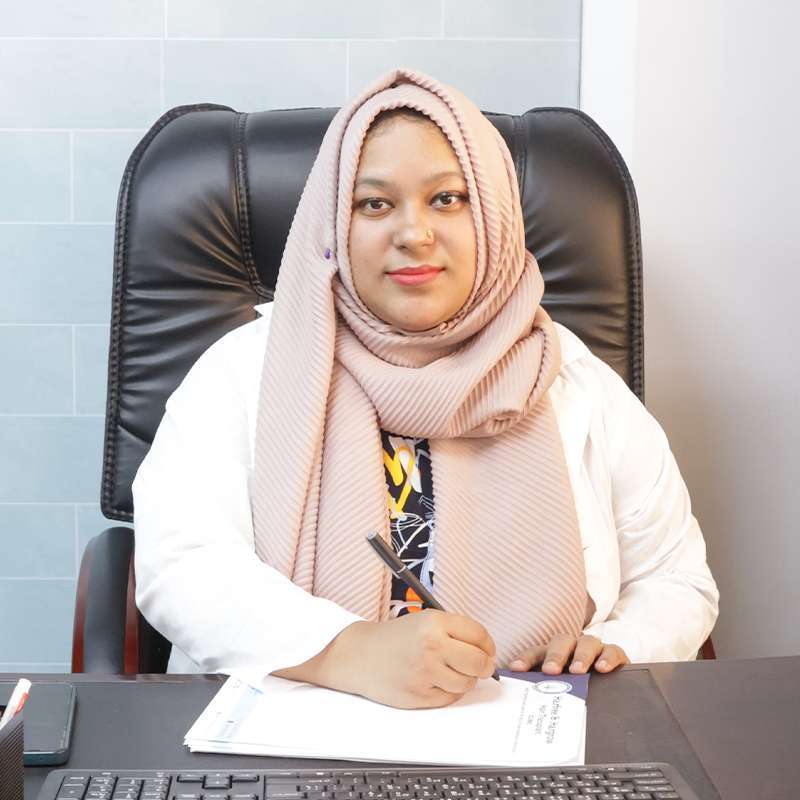
Written By
Medical Officer & Hair Transplant Surgeon
Dr. Nazmin Sultana Nipa is a distinguished hair transplant doctor in Bangladesh, known for her advanced skills in hair restoration. As a Medical Officer and Hair Transplant Surgeon, Dr. Nipa combines her extensive experience in the field with a focus on transparency and patient-centered care.
Disclaimer
We’ve made all possible efforts to ensure that the information provided here is accurate, up-to-date and complete, however, it should not be treated as a substitute for professional medical advice, diagnosis or treatment. See Detailed Disclaimers Here.

